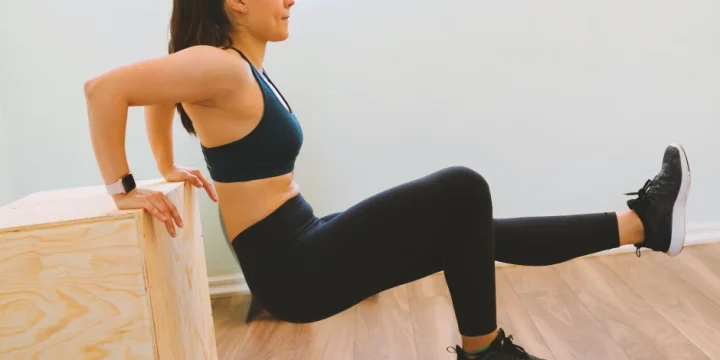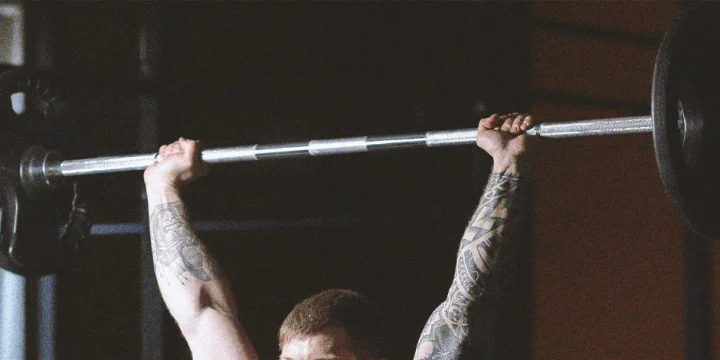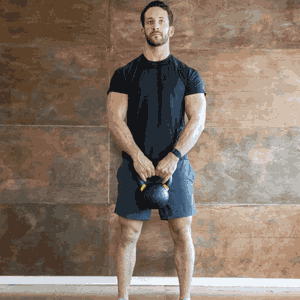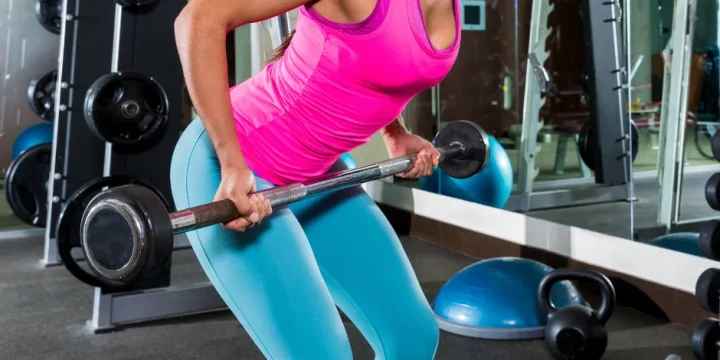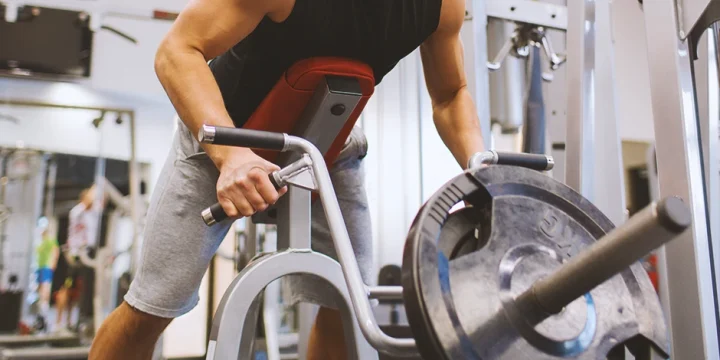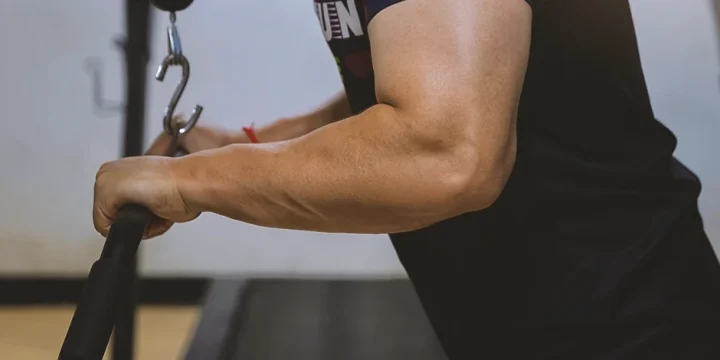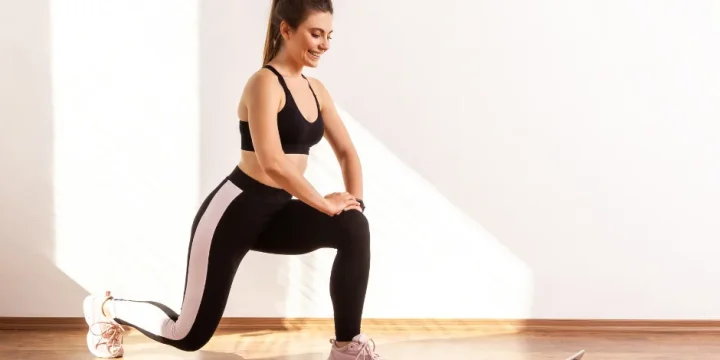You cannot undervalue the importance of keeping your shoulder joints and muscles strong.
The anterior, lateral, and posterior deltoids play a vital role in shoulder joint movement and stabilization, as well as being essential in moving your arm forward (flexion), backward (extension), and raising your arm out to the side (abduction).
In my opinion, one of the best exercises to increase and maintain strength in your shoulders is the cable upright row, so I decided to lay out the proper technique that I’ve been successfully applying and teaching my clients for almost a decade of being a professional fitness trainer.
Quick Summary
- To perform a cable upright row, attach a straight bar to the cable station, hold the straight bar with an overhead grip, pull up slowly before pausing, and lower back to the starting position.
- The cable upright row is a compound and pull exercise that targets multiple muscle groups, including the anterior, lateral, and posterior deltoids, in each rep.
- The optimal approach for the number of sets and reps is 2-3 sets of 10-15 repetitions, focusing on maintaining good technique and comfort, as overexertion can lead to injury, which this exercise aims to prevent.
- In my view, mastering the cable upright row, with its focus on mind-muscle connection and progressive overload, is crucial for anyone aiming to enhance their upper body strength and aesthetics.
Cable Upright Row Instructions

Here are the steps you need to complete in order to perform one proper rep:
- Attach a straight bar to the cable station. Stand with your feet shoulder-width apart, and knees slightly bent. Pick up the straight bar and lift it to thigh height; this is your starting position.
- Hold the straight bar with an overhand grip. Keep the bar close to your body and pull up slowly until you reach your chest, just below your neck. Your elbows will be high with your biceps parallel to the floor.
- Pause briefly before slowly straightening your arms, lowering the bar back to the start position.
- Pause at the starting position and then repeat.

What Is a Cable Upright Row?
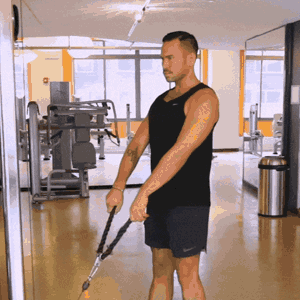
The cable upright row is a compound exercise, meaning it uses multiple muscle groups and joints during each rep.
It is a pull exercise that incorporates all the muscles required to execute a pulling movement.
According to the Cleveland Clinic, the anterior, lateral, and posterior deltoids are just some muscles this exercise targets [1].
It is performed by holding a straight bar in an overhand position and pulling upwards, and as I’ve learned from my experience so far, it is one of the best exercises to increase strength in the upper arms, shoulders, and back.
More exercises for shoulders:
- 13 Best Side Delts Exercises
- 10 Best Front Delt Exercises
- 10 Best Shoulder Exercises With Resistance Bands
What Is The Muscle Group Targeted By Cable Upright Rows?
The deltoids are the primary muscle group targeted by cable upright rows.
I can't stress enough the importance of strengthening this muscle group and incorporating this exercise into your regular workout routine.
Spanning from the edge of the shoulder blade to the end of the collarbone, the deltoid muscle group plays a critical role in stabilizing the shoulder and contributing to a vast array of arm movements.
“Shoulders have the most mobility, so they’re also the most unstable…keep them strong by taking a ‘pre-hab’ versus a ‘rehab’ approach.”
-Tom Holland, MS, C.S.C.S.
Cable Upright Row Tips

For an effective shoulder workout, try cable upright rows using a rope attachment as a row variation to target the upper back muscles.
Here are some cable upright row tips that might help you get the most out of this exercise and avoid injury.
- When it comes to the number of sets and reps, from my experience, the ideal range is 2-3 sets of 10-15 repetitions.
- You should repeat as long as you can maintain good technique and perfect form, and more importantly, as long as you feel comfortable because pushing yourself past your limits might be counterproductive and cause injury - the very thing this exercise is supposed to protect from.
- To further reduce the risk of injury, keep the elbows high with the biceps parallel to the floor. It is also essential not to use excessive weight when performing this exercise and also not to over-target the same muscle groups.
- Make sure to allow ample rest between workouts before working the same muscles again.
Benefits of Performing Cable Upright Row
- Targeted Muscle Engagement: Cable upright rows primarily target the upper back muscles, including the trapezius and deltoids. This exercise effectively engages these muscles, promoting balanced upper body strength and muscle development.
- Joint-Friendly Movement: The cable machine provides a more controlled movement compared to free weights, reducing stress on the shoulder joints. This makes cable upright rows a safer option for individuals with joint concerns or previous shoulder injuries.
- Constant Tension on Muscles: The cable machine maintains constant tension throughout the exercise, ensuring that the targeted muscles are effectively worked through the entire range of motion, leading to better muscle growth and strength gains.
- Improved Posture and Shoulder Stability: Regularly performing cable upright rows can improve posture by strengthening the upper back muscles, which are crucial for maintaining proper shoulder alignment and stability.
- Versatility in Training: The cable upright row can be easily modified for different skill levels and goals. Adjustments in grip, stance, and cable height allow for a variety of training stimuli, making it a versatile exercise in upper body workout routines.
Exercise Variations
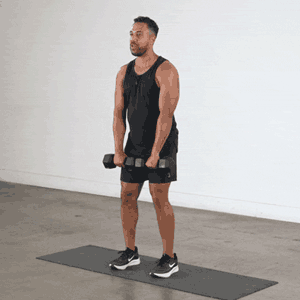
I recommend trying variations of the cable upright row if you don't have access to a cable machine, keeping in mind that each variation requires slight adjustments in technique.
Dumbbell Upright Row
This variation requires holding a dumbbell in each hand with an overhand grip. Both hands must be level as you pull the dumbbells up in front of your body and then slowly lower them to the start position.
Barbell Upright Row
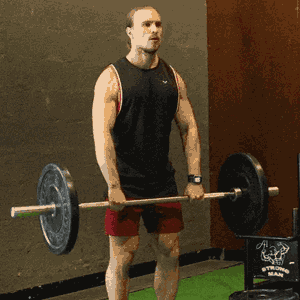 This variation most closely mimics the original using a weighted barbell. Start with the bar at your thighs, grip with your palms facing down and pull upwards, keeping the bar straight, your feet shoulder-width, and knees slightly bent.
This variation most closely mimics the original using a weighted barbell. Start with the bar at your thighs, grip with your palms facing down and pull upwards, keeping the bar straight, your feet shoulder-width, and knees slightly bent.
Kettlebell Upright Row 
A light-weight kettlebell is the best option as the grip requires both hands to be closer than other variations. Heavy weights can cause injury, including shoulder impingement.
FAQs
Are Cable Upright Rows Good?
Yes, cable upright rows are not only good but among the best exercises to strengthen and stabilize the shoulder and upper arm. These are vital to maintaining range of motion and reducing injury risk in exercise, weightlifting routines, and everyday tasks.
How Do You Do Upright Rows at Home?
You can do upright rows at home by substituting a barbell, kettlebell, or dumbbells for the straight bar, as this will yield similar results.
Is There a Safe Way to Do Upright Rows?
Yes, the safe way to do upright rows is to first learn the proper form to keep this exercise shoulder-friendly.
Consulting a trainer or watching a video is the surest way to avoid injury. Utilizing a mirror to self-evaluate your form during the exercise can be helpful.
References:
- https://my.clevelandclinic.org/health/body/21875-deltoid-muscles
About The Author
You May Also Like
